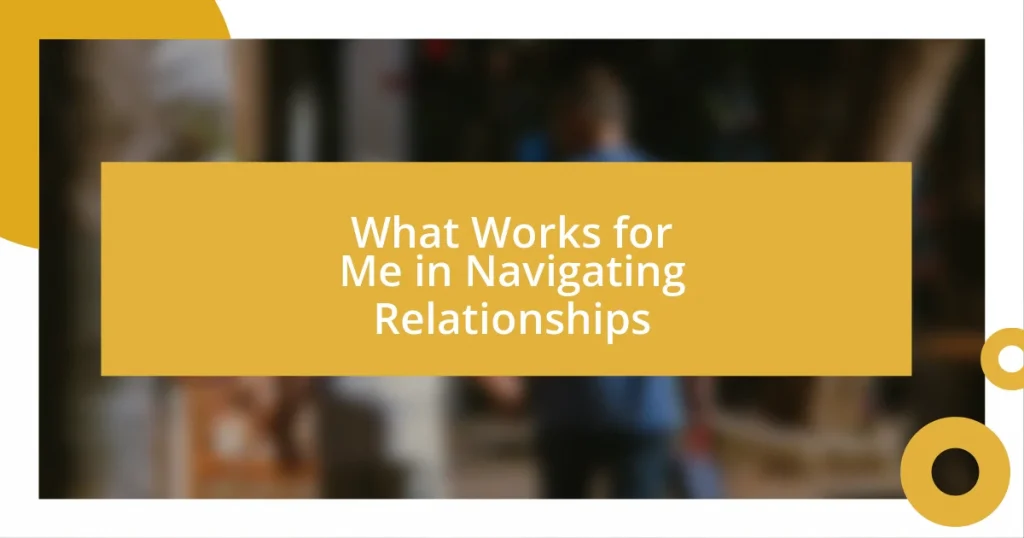Key takeaways:
- Understanding the context of violence is essential, as it intertwines with cycles of poverty, trauma, and personal experiences.
- Active listening and recognizing emotional cues are critical in conversations about violence; reflective listening and creating a safe environment foster productive dialogue.
- Encouraging constructive action and providing follow-up support can empower individuals to transform their feelings into meaningful community engagement.

Understanding the context of violence
Understanding the context of violence requires a deep dive into the underlying issues that often fuel it. I remember a conversation I had with a community leader who passionately spoke about the cycles of poverty and trauma. It struck me how intricately these factors are woven into the fabric of violence—one often breeds the other.
When we talk about violence, we must consider its cultural and societal backdrop. I once attended a workshop where we explored different narratives around conflict, and it became apparent that each story is unique. What do we understand about each person’s experiences that lead them to violence? This insight is crucial; it helps us see that violence doesn’t exist in a vacuum but is influenced by family dynamics, economic instability, and social norms.
In my experience, discussing violence often shines a light on uncomfortable truths. I recall a particularly challenging chat with a friend who had experienced domestic violence. It made me realize just how important context is—every situation has its own layers. What happened in that home? What could have changed if there were more resources or support? These questions remind us that addressing violence is about more than just the act; it’s about understanding the story behind it.
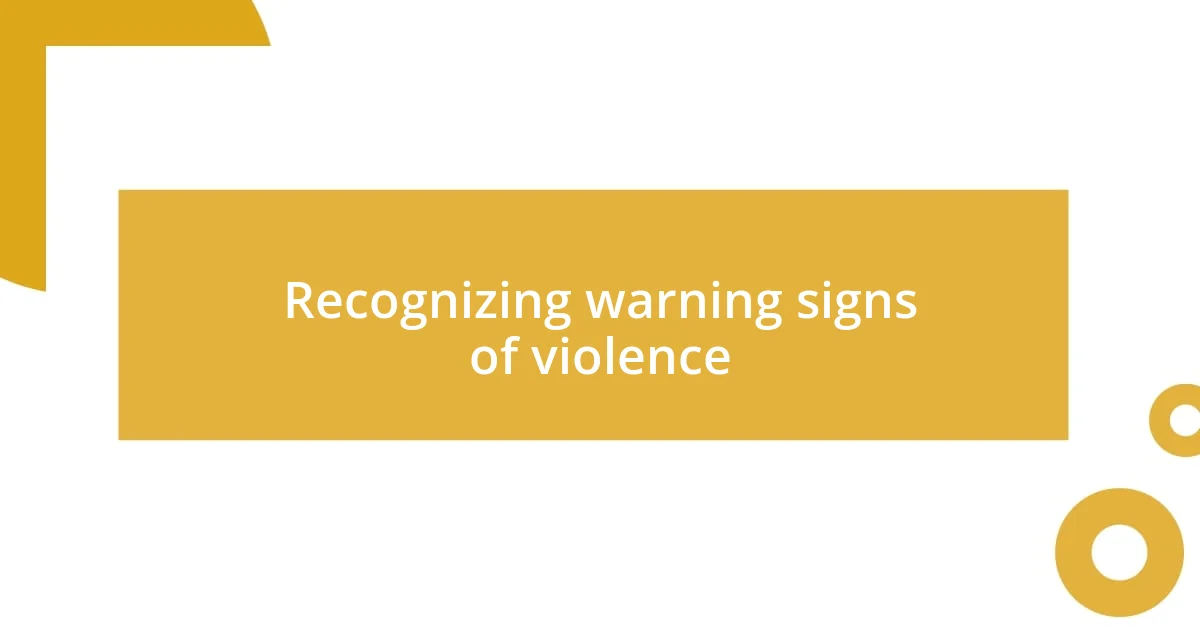
Recognizing warning signs of violence
Recognizing warning signs of violence involves being attuned to both verbal and non-verbal cues. I once had a friend who exhibited sudden changes in behavior, like isolation and irritability, which I initially chalked up to stress. Looking back, those signs were red flags that hinted at deeper issues and, unfortunately, a growing propensity for aggression. It’s crucial to pay attention to these indicators because, often, they speak louder than words.
Another key aspect of identifying warning signs is understanding how someone expresses anger or frustration. I remember a time during a family gathering when a seemingly harmless joke escalated into a heated argument. It was alarming to see how quickly one person’s emotions spiraled, showcasing the unpredictability of anger. This incident reinforced my belief that recognizing shifts in tone and body language is vital in gauging someone’s potential for violence.
Being aware of environmental clues is equally important. For instance, I once walked into a café where a couple was arguing loudly, and it created a palpable tension. Their surroundings felt charged, reinforcing the idea that violence can stem from external triggers, such as stressors from outside relationships or life events. These settings often serve as breeding grounds for conflict, so I always remind myself to remain vigilant and compassionate in such situations.
| Warning Signs | Behavioral Indicators |
|---|---|
| Isolation | Sudden withdrawal from friends or family. |
| Change in Mood | Increased irritability or explosive anger. |
| Intensity of Anger | Extreme reactions to minor provocation. |
| Hostility | Frequent arguments or confrontational behavior. |

Setting the right environment
Setting the right environment can dramatically influence the tone and outcome of conversations about violence. I’ve learned this firsthand while facilitating dialogues in community centers. I vividly remember arranging chairs in a circle rather than facing each other, which encouraged openness. The intimate setup sparked more heartfelt sharing and created a sense of safety, letting people feel at ease as they broached sensitive topics.
Here are some key elements that contribute to setting an effective environment:
- Comfortable Space: Ensure the physical environment is inviting. Soft lighting and comfortable seating can make a remarkable difference.
- Non-Judgmental Atmosphere: Everyone should feel free to express their feelings without fear of being criticized.
- Active Listening: Encouraging participants to listen actively creates respect and understanding among everyone involved.
- Privacy: Choosing a quiet, private location can help maintain confidentiality and encourage honesty.
- Ground Rules: Establishing shared guidelines helps participants understand how to interact respectfully and ensures everyone can speak without interruption.
Setting the right environment shapes the discussion. I experienced this during a small-group discussion after a tragedy in our community. Before we started, we took a moment to breathe and center ourselves. That simple act of mindfulness allowed everyone to share their feelings on vulnerability and fear. It taught me the power of creating a space where emotions could flow freely, fostering raw and real communication.
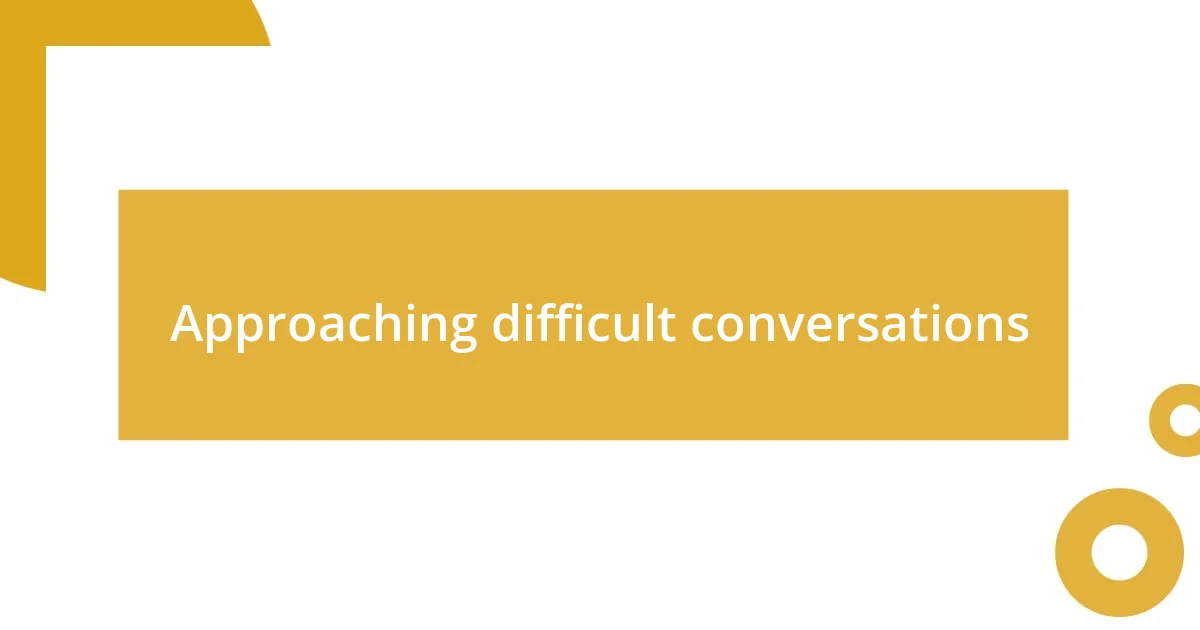
Approaching difficult conversations
When I think about approaching difficult conversations, I often remind myself that preparation is key. I once found myself in a heavy dialogue with a coworker about workplace harassment. My heart raced as nerves kicked in, but I realized that taking a moment to gather my thoughts before diving in gave me clarity. How many times have I rushed into a tough discussion only to feel overwhelmed? Taking a step back can create a more thoughtful atmosphere, setting the stage for open dialogue.
Another aspect I’ve found invaluable is the power of empathy. I recall a time when I had to discuss a friend’s troubling behavior that hinted at violence. Instead of coming in with accusations, I chose to express my concern through “I” statements, saying, “I feel worried when I see you withdrawing.” This approach opened the door for a more honest discussion. Why is it that vulnerability often leads to deeper connections? In my experience, it fosters understanding and allows the other person to feel safe enough to share their side.
As I engage in these delicate conversations, I try to be mindful of timing. There was an instance where I brought up a sensitive topic during a chaotic family gathering; it backfired spectacularly. The atmosphere was tense, filled with distractions, and it escalated quickly into confusion. I’ve learned that finding the right moment can make all the difference, allowing the conversation to unfold in a more constructive way. Have you ever caught yourself trying to talk when emotions are running high? Timing truly is everything, and recognizing the right moment can transform a difficult conversation into a meaningful exchange.
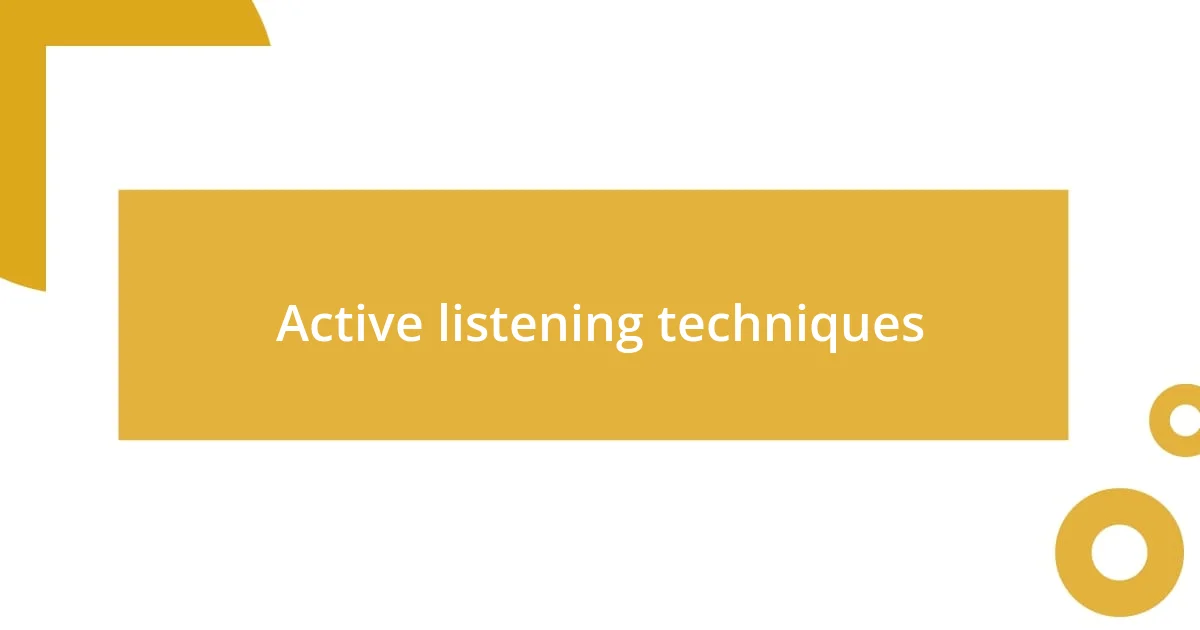
Active listening techniques
Active listening isn’t just about hearing words; it’s about understanding the emotions behind them. I remember sitting across from a friend who had experienced trauma. As they spoke, I focused not just on what they said, but also on their tone and body language. I found myself nodding along and giving small verbal affirmations like “I see” and “That makes sense.” This simple act of validation not only encouraged them to open up further, but it also deepened our connection. Have you ever noticed how someone’s eyes light up when they feel truly heard? It’s a powerful moment.
During these conversations, I often employ reflective listening, where I paraphrase what the person said to ensure I understood correctly. I once used this technique while discussing a heavy topic with a community member who felt marginalized. After they shared their experiences, I responded with, “So you felt isolated and unheard in that situation?” It was fascinating to see their relief; they felt acknowledged. In my experience, this technique doesn’t just clarify points, it reinforces trust and shows that I genuinely care about their feelings.
Lastly, silence can be a profound tool in active listening. There was a time when a participant in a workshop was visibly shaken as they shared their story. Instead of rushing in to fill the gap, I sat quietly, allowing them the space to gather their thoughts. Watching their emotional struggle unfold in silence taught me that sometimes, the most significant support comes from simply being present. How can silence transform a conversation? In my view, it offers a moment for reflection, allowing both sides to process their emotions before moving forward.
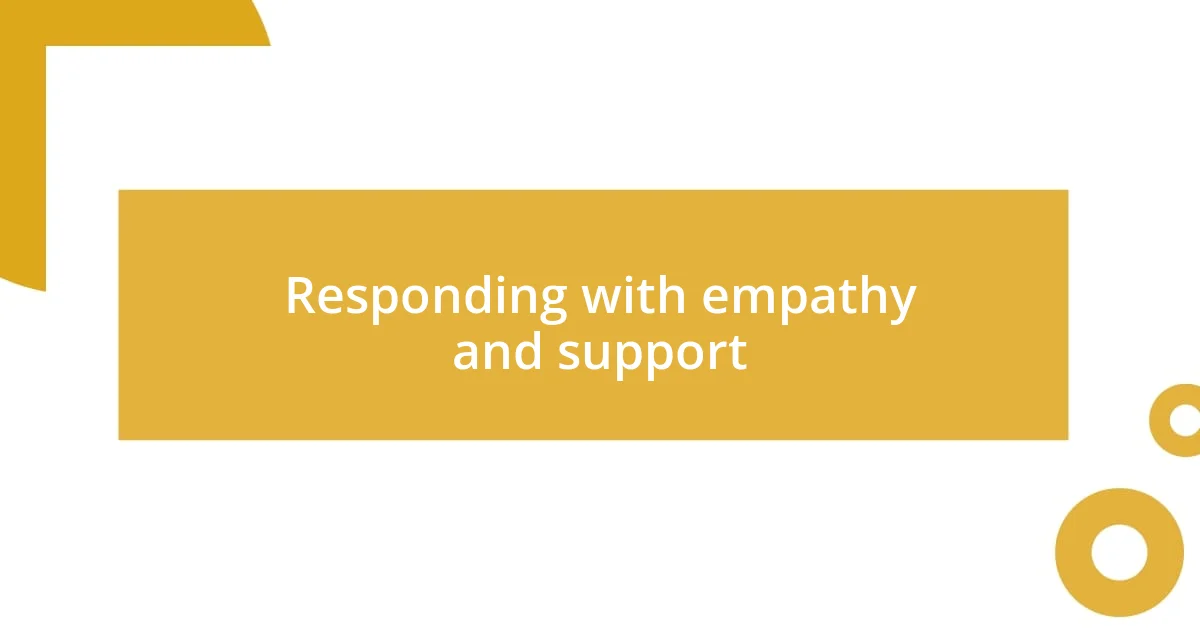
Responding with empathy and support
When responding to someone in distress, I’ve learned that offering genuine support can make all the difference. One evening, a family member confided in me about their experiences with violence. Instead of minimizing their feelings, I simply said, “I’m here for you, and it’s okay to feel this way.” I could see their shoulders relax, and for a moment, the weight of their struggles seemed a little lighter. Isn’t it amazing how the right words can create such a safe space for someone to express their vulnerability?
Empathy goes beyond just sympathy; it requires a commitment to really understand what the other person is feeling. I had a conversation with a colleague who had been affected by violence in the community. As they opened up about their fears, I made it a point to share, “I can’t imagine how frightening that must be for you.” This simple acknowledgment seemed to resonate deeply, allowing them to feel seen. Have you ever thought about how much it means when someone recognizes your pain? It’s a reminder that you’re not alone in your experiences.
Supporting someone isn’t just about what you say; it’s about how you show up for them. I remember attending a support group where members shared their experiences of violence and recovery. Rather than offering solutions, I focused on being a steady presence, nodding and offering reassuring glances. Afterward, several participants expressed gratitude for my attentiveness without me needing to say much at all. Could it be that sometimes, our mere presence is the most powerful way to affirm someone’s feelings? In my experience, sometimes just being there speaks louder than anything else.

Encouraging constructive action and follow-up
Encouraging constructive action involves more than just talking; it’s about inspiring a sense of agency in others. I recall a conversation with a friend who felt overwhelmed after witnessing violence in their neighborhood. Instead of dwelling solely on the victimization, I asked, “What steps do you think we could take to help our community feel safer?” Suddenly, their expression shifted from despair to determination as they brainstormed ideas with me. It’s in these moments that I realize how a simple nudge toward action can reignite hope.
Follow-up is equally important in maintaining momentum after these discussions. After that same conversation, I made it a point to check in with my friend a week later. I texted, “Hey, how are you feeling about those ideas we discussed? Any progress?” Their excitement was palpable as they shared how they had connected with local organizations. It made me appreciate how ongoing support can transform a spark of inspiration into tangible change. Isn’t it fascinating how a small gesture can reinforce the importance of staying engaged in these conversations?
To further encourage constructive action, I often share resources that can empower the person I’m conversing with. I once found an article about community safety initiatives and sent it to someone who was feeling disheartened. They replied with gratitude, saying it opened their eyes to new possibilities. It’s amazing how providing tools and information can validate someone’s experience and foster a sense of ownership over their situation. Have you ever felt a shift when someone offered you a helpful resource? For me, it’s a reminder that action often grows from informed awareness.












